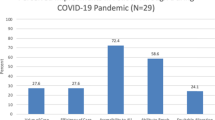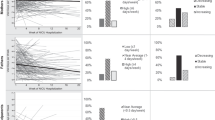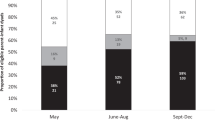Abstract
Objective:
Frequent parental visits are likely to benefit infants in a neonatal intensive care unit (NICU), particularly extremely low birth weight (ELBW; ⩽1000 g) survivors. Parking costs (⩾$10 per visit in our center) may deter visitation, especially for low-income parents. We assessed whether free parking (FP) decreased survivors’ length of stay (LOS).
Study Design:
Parents (N=138) of ELBW infants (7 to 14 days old) were randomized to usual care (UC; n=66) or FP (n=72). The primary outcome was LOS.
Results:
Among survivors (n=116), LOS was not significantly less with FP than UC (means: FP=89, UC=102 days, P=0.22; medians: FP=82, UC=84 days, P=0.30). Groups did not differ significantly on proportion of visit days (FP=0.69, UC=0.72, P=0.47), parental involvement, knowledge/skills and satisfaction. Post hoc analyses found that parents with a greater income, a car and fewer children visited more.
Conclusion:
More potent interventions than FP are needed to increase parental visits and reduce LOS for ELBW infants in disadvantaged urban populations.
This is a preview of subscription content, access via your institution
Access options
Subscribe to this journal
Receive 12 print issues and online access
$259.00 per year
only $21.58 per issue
Buy this article
- Purchase on Springer Link
- Instant access to full article PDF
Prices may be subject to local taxes which are calculated during checkout
Similar content being viewed by others
References
Institute of Medicine. Committee on Quality of Health Care in America Crossing the Quality Chasm: A New Health System for the 21st Century. National Academy Press: Washington, DC, 2001.
Gooding JS, Cooper LG, Blaine AI, Franck LS, Howse JL, Berns SD . Family support and family-centered care in the neonatal intensive care unit: origins, advances, impact. Semin Perinatol 2011; 35 (1): 20–28.
Cooper L, Gooding J, Gallagher J, Sternesky L, Ledsky R, Berns S . Impact of a family-centered care initiative on NICU care, staff and families. J Perinatol 2007; 27: S32–S37.
Obeidat HM, Bond EA, Callister LC . The parental experience of having an infant in the newborn intensive care unit. J Perinatal Educ 2009; 18 (3): 23.
Committee on Hospital Care and Institute For Patient- and Family-Centered Care. Patient-and family-centered care and the pediatrician's role. Pediatrics 2012; 129 (2): 394–404.
Institute for Health Care Improvement. Person- and Family-Centered Care, 2015 (cited 2015 December 21, 2015). Available from http://www.ihi.org/topics/PFCC/Pages/default.aspx.
Melnyk BM, Feinstein NF, Alpert-Gillis L, Fairbanks E, Crean HF, Sinkin RA et al. Reducing premature infants' length of stay and improving parents' mental health outcomes with the Creating Opportunities for Parent Empowerment (COPE) neonatal intensive care unit program: a randomized, controlled trial. Pediatrics 2006; 118 (5): e1414–e1427.
Örtenstrand A, Westrup B, Broström EB, Sarman I, Åkerström S, Brune T et al. The Stockholm Neonatal Family Centered Care Study: effects on length of stay and infant morbidity. Pediatrics 2010; 125 (2): e278–e285.
Kohn LT, Corrigan JM, Donaldson MS . To err is human: building a safer health system. National Academies Press: Washington, DC, 2000.
Davidson JE, Powers K, Hedayat KM, Tieszen M, Kon AA, Shepard E et al. Clinical practice guidelines for support of the family in the patient-centered intensive care unit: American College of Critical Care Medicine Task Force 2004–2005. Crit Care Med 2007; 35 (2): 605–622.
Lee HC, Bennett MV, Schulman J, Gould JB . Accounting for variation in length of NICU stay for extremely low birth weight infants. J Perinatol 2013; 33 (11): 872–876.
Fan E, Laupacis A, Pronovost PJ, Guyatt GH, Needham DM . How to use an article about quality improvement. JAMA 2010; 304 (20): 2279–2287.
Dunn MS, Reilly MC, Johnston AM, Hoopes RD, Abraham MR . Development and dissemination of potentially better practices for the provision of family-centered care in neonatology: The family-centered care map. Pediatrics 2006; 118 (Suppl 2): S95–S107.
U.S. Centers for Medicare & Medicaid Services. Federal Poverty Level (FPL), 2016 (cited 2016 June 21, 2016). Available from https://www.healthcare.gov/glossary/federal-poverty-level-FPL/.
Fanaroff AA, Kennell JH, Klaus MH . Follow-up of low birth weight infants—the predictive value of maternal visiting patterns. Pediatrics 1972; 49 (2): 287–290.
Latva R, Lehtonen L, Salmelin R, Tamminen T . Visits by the family to the neonatal intensive care unit. Acta Paediatr 2007; 96 (2): 215–220.
Bhutta ZA, Khan I, Salat S, Raza F, Ara H . Reducing length of stay in hospital for very low birthweight infants by involving mothers in a stepdown unit: an experience from Karachi (Pakistan). BMJ 2004; 329 (7475): 1151–1155.
Latva R, Lehtonen L, Salmelin RK, Tamminen T . Visiting less than every day: a marker for later behavioral problems in Finnish preterm infants. Arch Pediatr Adolesc Med 2004; 158 (12): 1153–1157.
Zeskind PS, Iacino R . Effects of maternal visitation to preterm infants in the neonatal intensive care unit. Child Dev 1984; 1887–1893.
Giacoia GP, Rutledge D, West K . Factors affecting visitation of sick newborns. Clin Pediatr (Phila) 1985; 24 (5): 259–262.
Gonya J, Nelin LD . Factors associated with maternal visitation and participation in skin‐to‐skin care in an all referral level IIIc NICU. Acta Paediatr 2013; 102 (2): e53–e56.
McGrath JM . Strategies for increasing parent participation in the neonatal intensive care unit. J Perinat Neonatal Nurs 2011; 25 (4): 305–306.
Franck LS, Spencer C . Parent visiting and participation in infant caregiving activities in a neonatal unit. Birth 2003; 30 (1): 31–35.
Callahan EJ, Brasted WS, Myerberg DZ, Hamilton S . Prolonged travel time to neonatal intensive care unit does not affect content of parental visiting: a controlled prospective study. J Rural Health 1991; 7 (1): 73–83.
Quigley M, McGuire W . Formula versus donor breast milk for feeding preterm or low birth weight infants. The Cochrane Library 2014; 4: 1–92.
Ludington-Hoe S, Hadeed A, Anderson G . Physiologic responses to skin-to-skin contact in hospitalized premature infants. J Perinatol 1991; 11 (1): 19–24.
Feldman R, Eidelman AI . Skin-to-skin contact (Kangaroo care) accelerates autonomic and neurobehavioural maturation in preterm infants. Dev Med Child Neurol 2003; 45 (4): 274–281.
Reynolds LC, Duncan MM, Smith GC, Mathur A, Neil J, Inder T et al. Parental presence and holding in the neonatal intensive care unit and associations with early neurobehavior. J Perinatol 2013; 33 (8): 636–641.
Acknowledgements
We acknowledge the diligence and dedication of Josephine Turner at the UTHealth Clinical Research Unit at Memorial Hermann-TMC, Michelle Celestin for her help preparing the references’ section of this manuscript and the staff of the UTHealth High-Risk Infant Clinic. This study was supported by a Clinical and Translational Science Award (NCATS UL1 TR000371 and UL1 RR 024148, PI=McPherson; NCATS KL2 TR000370 and KL2 RR 024149, PI=PWE). Data analysis and writing time by TFN were supported in part by the National Heart, Lung, and Blood Institute (R01 HL107404, PI=AL Stotts) at the U.S. National Institutes of Health, and Department of Health and Human Services.
Author information
Authors and Affiliations
Corresponding author
Ethics declarations
Competing interests
The authors declare no conflict of interest.
Additional information
Supplementary Information accompanies the paper on the Journal of Perinatology website
Supplementary information
Rights and permissions
About this article
Cite this article
Northrup, T., Evans, P., Lillie, M. et al. A free parking trial to increase visitation and improve extremely low birth weight infant outcomes. J Perinatol 36, 1112–1115 (2016). https://doi.org/10.1038/jp.2016.136
Received:
Revised:
Accepted:
Published:
Issue Date:
DOI: https://doi.org/10.1038/jp.2016.136
This article is cited by
-
Clinician–family relationships may impact neonatal intensive care: clinicians’ perspectives
Journal of Perinatology (2021)
-
Ronald McDonald House accommodation and parental presence in the neonatal intensive care unit
Journal of Perinatology (2021)
-
Duration of breastmilk feeding of NICU graduates who live with individuals who smoke
Pediatric Research (2021)
-
Financial Support to Medicaid-Eligible Mothers Increases Caregiving for Preterm Infants
Maternal and Child Health Journal (2020)
-
Long non-coding RNA MALAT1 protects preterm infants with bronchopulmonary dysplasia by inhibiting cell apoptosis
BMC Pulmonary Medicine (2017)



